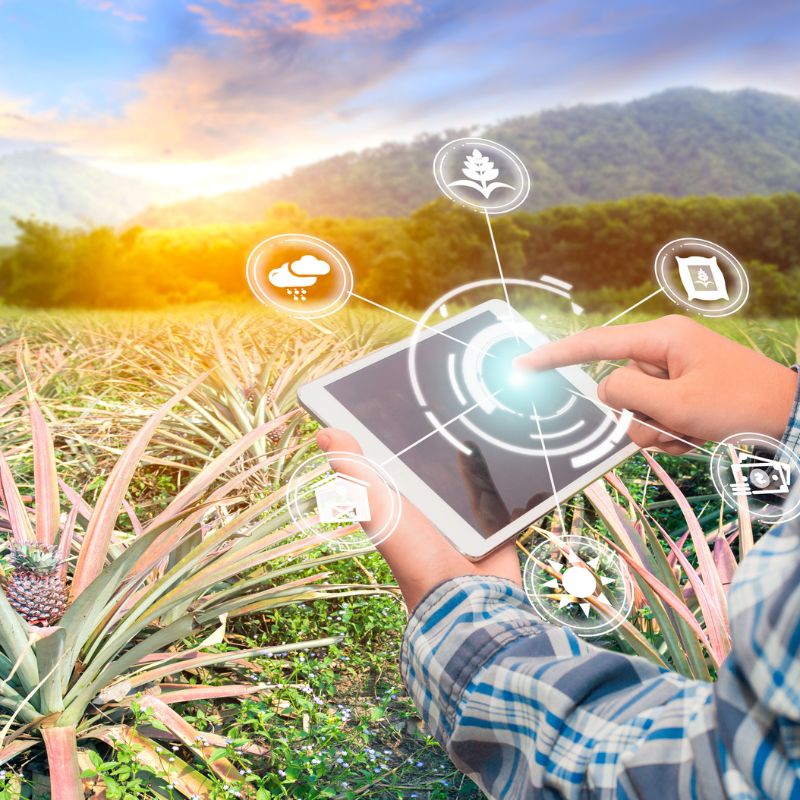The world of horticulture is experiencing a game-changing technological shift, with cutting-edge advancements focused on boosting productivity, streamlining processes, and improving connectivity. These innovations present a unique opportunity for Australian horticulture employers to become frontrunners in eco-friendly and ethical farming practices. In this article, we'll take you through some of the ground-breaking technologies, their real-world effects, and how vital connectivity is for successfully bringing AgTech solutions to life on your farm.
Increasing Productivity with Cutting-Edge Technologies
Digital agriculture is reshaping the way farmers manage crops, helping them tackle challenges like unpredictable climate and market conditions. A compelling example comes from the Australian wine industry, where precision viticulture techniques have been employed to optimise grape quality and yield. Through the use of remote sensing, GPS technology, and variable rate irrigation systems, vineyard managers can make data-driven decisions on how to manage their vineyards more effectively. This has significantly improved water use efficiency and cost reductions. Technologies such as sensor networks, IoT, and automation contribute to increased yields, revolutionising traditional farming practices.

Boosting Efficiency through Smart Solutions
Digital agriculture promotes resource efficiency, optimises tasks and supports input and fuel use efficiency. Digital solutions enable cost-effective knowledge exchange and learning opportunities in remote locations, empowering farmers to make well-informed decisions. Automation in farming operations results in reduced reliance on manual tasks, further enhancing overall efficiency. AgTech has made significant strides in revolutionising the sugar industry, improving traceability and transparency throughout the supply chain. A recent example is the shipment of raw sugar from Townsville, where blockchain technology made it possible to track the sugar’s journey from the farm to its final destination.

Enhancing Connectivity for a Well-Connected Horticulture Industry
Seamless connectivity is key to successfully implementing and integrating digital solutions in horticulture. By enabling smooth data transfer between various devices, platforms, and stakeholders, enhanced connectivity empowers growers to make informed decisions and improve farm management.
The Power of Connectivity in Digital Agriculture
Real-time data transfer

With enhanced connectivity, growers can access up-to-date information on crop health, weather patterns, and soil conditions, thanks to real-time data transfer between devices like sensors, drones, and IoT systems.
Remote monitoring and control

Improved connectivity means growers can remotely monitor and control farm equipment and systems, such as irrigation networks and autonomous vehicles, leading to more efficient farm management.
Collaboration and knowledge sharing

A well-connected agricultural industry fosters collaboration and knowledge sharing among growers, researchers, and other stakeholders, promoting the adoption of best practices and innovative solutions for a more sustainable and efficient industry.
Overcoming Connectivity Challenges in Agriculture
Limited access to high-speed internet and network infrastructure in rural and remote areas poses significant challenges for the deployment and maintenance of sensor networks and other digital solutions in the horticulture industry.
This connectivity gap can lead to unreliable data transfer and communication between devices, ultimately reducing the value and effectiveness of these technologies. Furthermore, the costs associated with implementing and maintaining connectivity infrastructure can be prohibitive, particularly for smaller growers, potentially exacerbating the digital divide.

As the industry becomes increasingly connected, addressing cybersecurity risks is of paramount importance. Ensuring the security and privacy of data collected and transmitted across networks is vital for maintaining trust in digital agriculture solutions and fostering a resilient, sustainable, and connected future for horticulture.
Other Considerations in AgTech Adoption
While the benefits of AgTech are evident, it is essential to consider the potential challenges and adverse impacts, such as technical expertise requirements, effects of insufficient technical support, trust, inequality, and regulatory lags.
Ensuring all growers have equal access to technology, reliable internet connection, and the necessary resources to operate will promote equitable access to these innovative opportunities.
New technologies have the potential to significantly improve productivity, efficiency, and connectivity in the horticulture industry.
By addressing the digital divide and ensuring equitable access to these innovations, the Australian horticulture and agriculture sectors can continue to thrive and compete on a global scale.
As the industry evolves, embracing and overcoming these challenges will be vital for future success and competitiveness in a global market.
